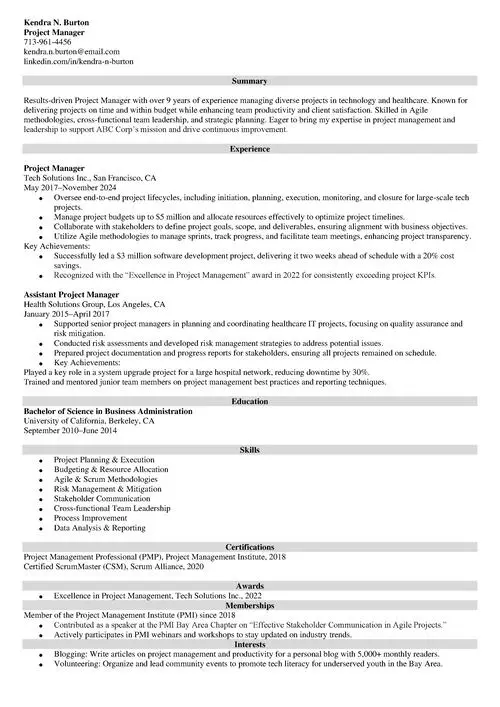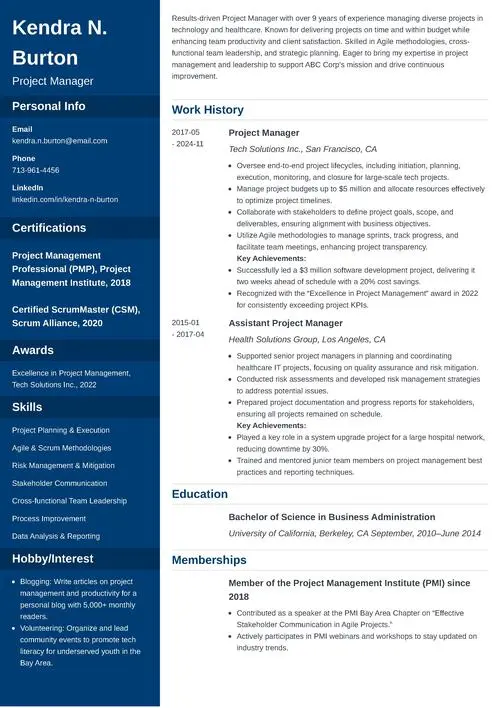CV vs Resume: 3 Key Differences + Examples [2025]
Create Your Resume NowResumes vs. CVs. Is a CV any different from a resume? Why do some candidates apply with a CV, and others use a resume? Is any of the two actually better than the other? Is resume just another word for CV, and vice versa?
In 5 minutes, you’ll learn everything you need to know about the CV vs. resume difference.
This guide will show you:
- What does CV stand for? What is a resume?
- The difference between a CV and a resume compared and explained with the help of sample documents.
- When should you use a CV vs. a resume when applying in the US or Canada?
- What does a CV stand for outside North America, and what document to use when applying internationally.
Want to save time and have your resume ready in 5 minutes? Try our resume builder. It’s fast and easy to use. Plus, you’ll get ready-made content to add with one click. See 20+ resume templates and create your resume here.
Sample resume made with our builder—See more resume examples here.
If you're just looking for the bottom line on the topic of resumes vs. CVs, here it is:
What Is the Difference Between a CV and a Resume?
The main difference between a CV and a resume is that a resume is used for job search, and a CV—for academic purposes. A resume is a one- to two-page document presenting key facts about your professional experience, educational background, and skills. A CV (Curriculum Vitae) is a longer document that details the whole course of your career.

Not quite clear? See the detailed overview of a CV versus a resume below:
What Is a CV?
A CV (short for Curriculum Vitae—course of life in Latin) describes your whole career. It’s usually 2–3 pages long but can be over 10+ pages if necessary. A CV presents your education, professional career, publications, awards, etc. It’s used in the USA and Canada only for academic applications.
To see what it looks like, check out the CV example below:
Curriculum Vitae Sample
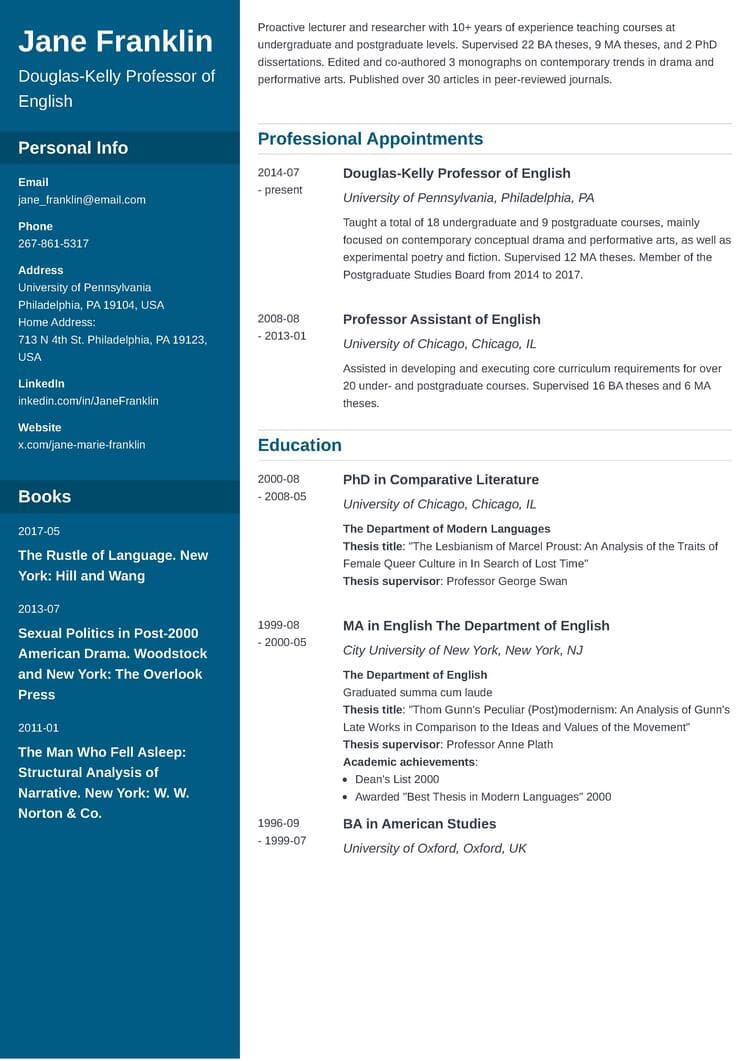
As you can see, what goes on a CV is very detailed and comprehensive: many sections, no bullet points, just plain text (after all, the CV abbreviation comes from the phrase Curriculum Vitae which means a course of life, so no wonder it’s that long!). A sheer emanation to the commitment of being a lifelong learner.
Below you’ll see a full list of sections you may use when writing a CV:
- Contact information
- Research objective, personal profile, or personal statement
- Education
- Professional academic appointments
- Books
- Book chapters
- Peer-reviewed publications
- Other publications
- Awards and honors
- Grants and fellowships
- Conferences
- Teaching experience
- Research experience, lab experience, or graduate fieldwork
- Non-academic activities
- Languages and skills
- Memberships
- References
Before we show you a full resume/CV comparison, let’s quickly define résumé.
Read more: What Is a CV? Meaning & Definition
What Is a Resume?
A resume (or résumé, from French “to sum up”) is a short, concise document used for job applications in the US and Canada. The purpose of a resume is to provide recruiters with a brief overview of the candidate’s work history. A good resume should be targeted at a specific job and be 1–2 pages long.
Have a look at the below example made with our builder in US resume format. The difference between a resume and a CV is clear, isn’t it?
American Resume Sample
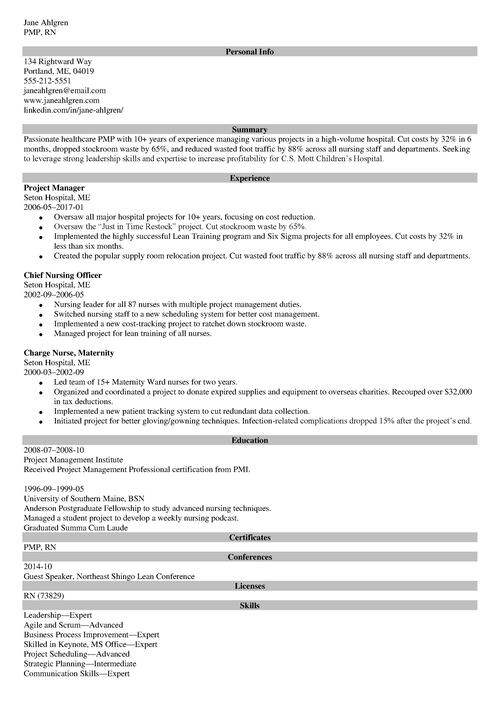
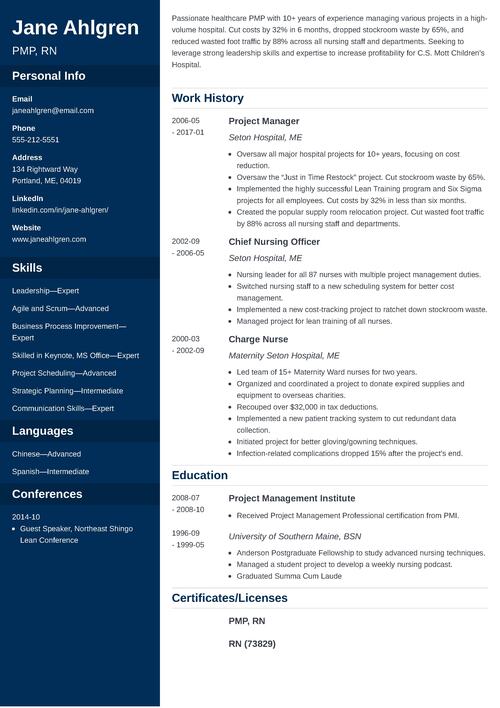
What should be on a resume, then?
- Contact information including job title
- Resume summary or resume objective
- Work experience
- Education section
- Skills section
- Additional resume details (awards, courses, resume publications, licenses and certifications, personal interests, etc.)
So now you know how a resume should look, but before we move on, a technical thing that confuses many job seekers: How to type a resume? Although originally spelled “résumé” in French, in English, both forms—”resume” and “résumé”—are correct.
If you want to learn more about how to write a job-winning resume, switch over to: How to Make a Resume for a Job (Samples & a Writing Guide)
3 Essential Differences Between CVs and Resumes
Let’s analyze the differences between a resume and a CV in more detail:
- Length—it’s the primary and most obvious distinction between the two. A CV is longer—it might be two or three pages (in fact, there’s no page limit), depending on your experience, while a resume is typically one page long.
- Layout—a CV is an in-depth description of your academic and professional experience, while a resume is a brief document highlighting your professional experience.
- Purpose—a CV is used to apply for academic positions, while a resume allows you to apply for any job in any industry.
Read more: If you’ve decided you need a resume, check out our article on what to do and what to avoid when it comes to writing your resume: Resume Dos and Don'ts You Should Know.
Curriculum Vitae vs. Resume: International Differences & When to Use Which
The resume/CV meaning differences pertain only to the United States. In other countries, the term resume either doesn’t exist or is used as a synonym for CV:
- In Europe and New Zealand, the term CV is a synonym for the US resume: a short, targeted document you use to apply for jobs. There’s no such thing as a “resume” there. There are only minor, region-specific differences between a New Zealand or European CV and an American resume.
- In Australia and South Africa, “Curriculum Vitae” and “resume” are synonyms that can be used interchangeably. Both words stand for a brief, one- to two-page document.
In South Asia, job seekers might need to use a slightly different document: a biodata. It contains more personal, “biographical” data (hence the name): date of birth, gender, race, ethnicity, marital status, and salary. It’s commonly used in India and Bangladesh. However, if a South Asian employer asks you for a “resume” or a “CV” specifically, don’t send over a biodata format. Go for a document that follows the American resume rules.
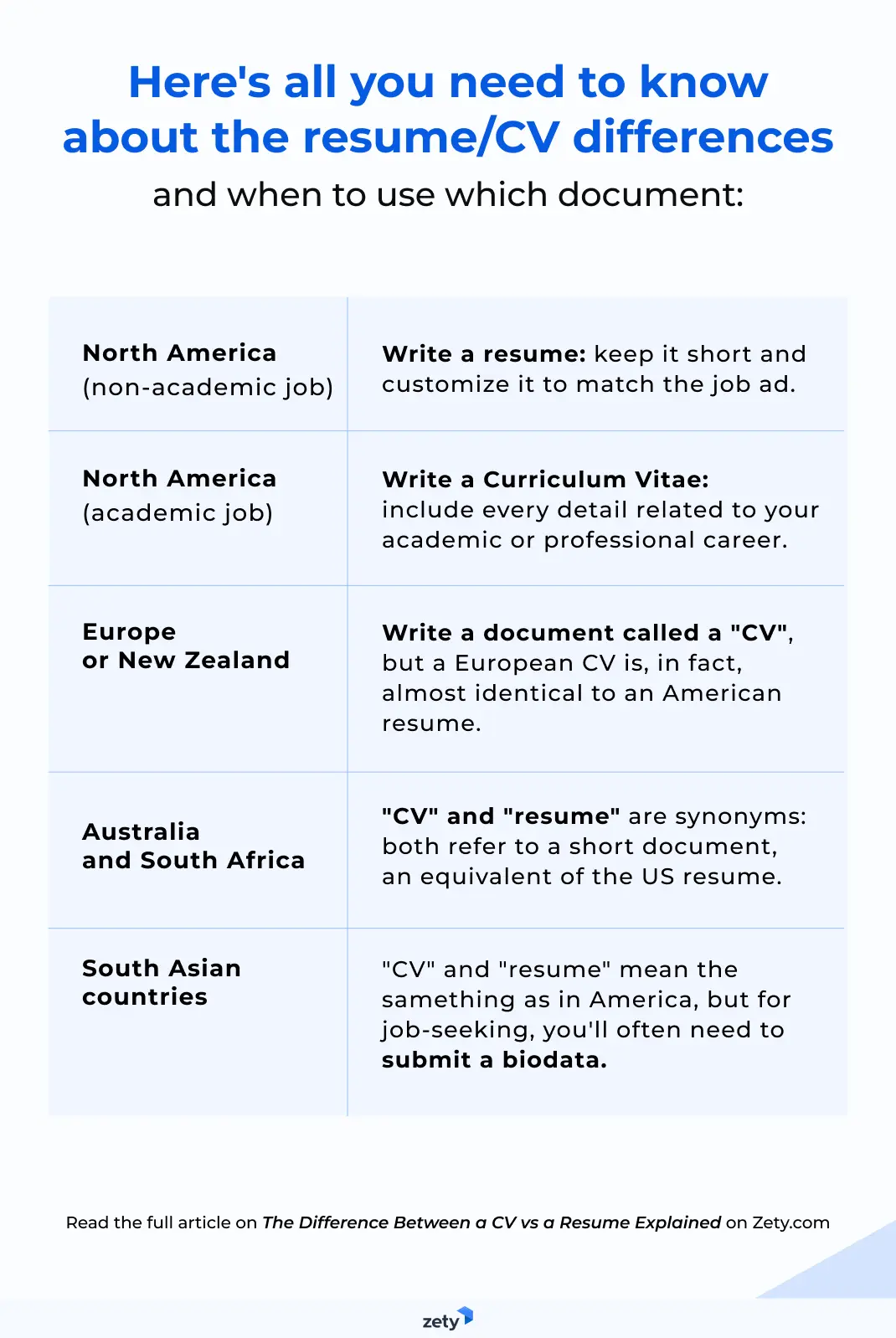
Plus, a great cover letter that matches your resume will give you an advantage over other candidates. You can write it in our cover letter builder here. Here's what it may look like:
See more cover letter templates and start writing.
Key Takeaway
Here’s all you need to know about the resume/CV differences:
- A resume is a document summarizing your relevant experience and qualifications. It’s used when applying for a job.
- A CV is a longer summary that prioritizes your academic achievements over work experience. It’s used for applying for jobs in academia.
- The main 3 differences between a resume and a CV pertain to their length, function, and type of information included.
- To apply for a job in Europe or New Zealand, write a CV in the same format as a standard US resume. In Australia and South Africa, the terms are used interchangeably and also refer to an equivalent of the US resume.
- When applying for a job in South Asian countries, you may be asked to deliver a biodata, which contains more personal information than a resume.
I hope this article helped clear up the differences between CVs and resumes. If you're still not sure whether to choose a resume or a CV, leave a comment. I'll answer all your CV vs. resume questions!
About Zety’s Editorial Process
This article has been reviewed by our editorial team to make sure it follows Zety's editorial guidelines. We’re committed to sharing our expertise and giving you trustworthy career advice tailored to your needs. High-quality content is what brings over 40 million readers to our site every year. But we don't stop there. Our team conducts original research to understand the job market better, and we pride ourselves on being quoted by top universities and prime media outlets from around the world.

